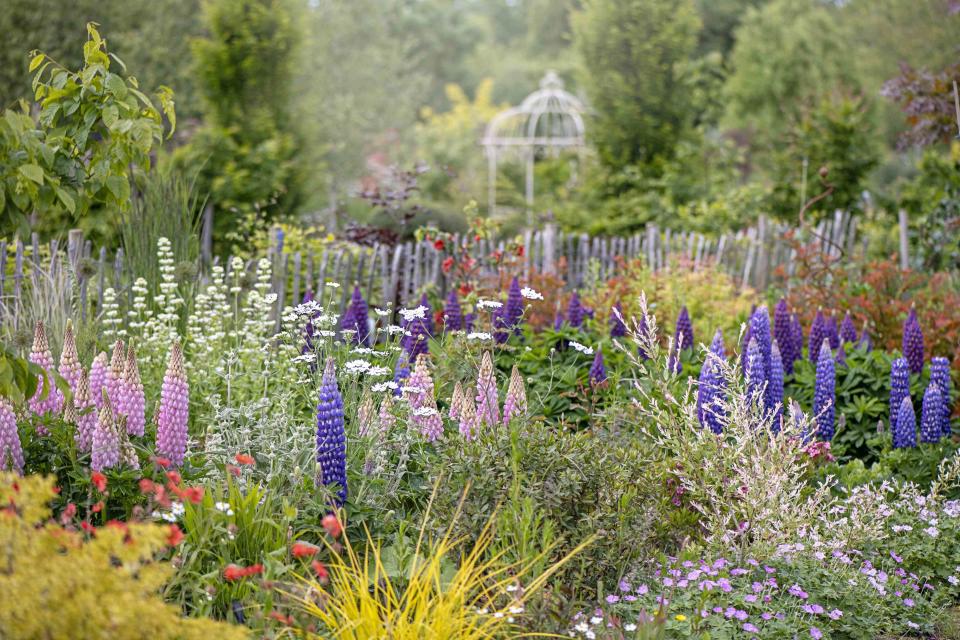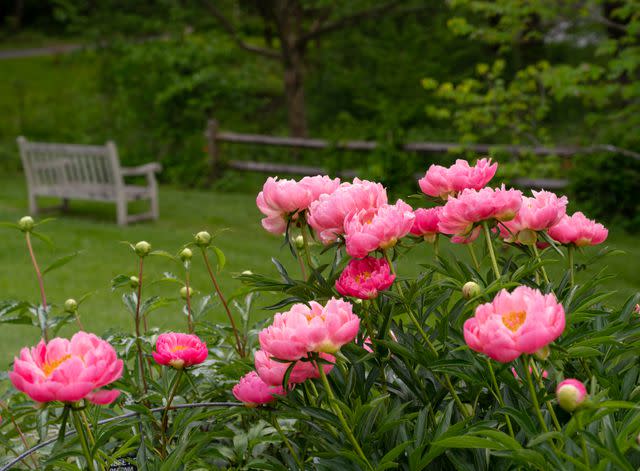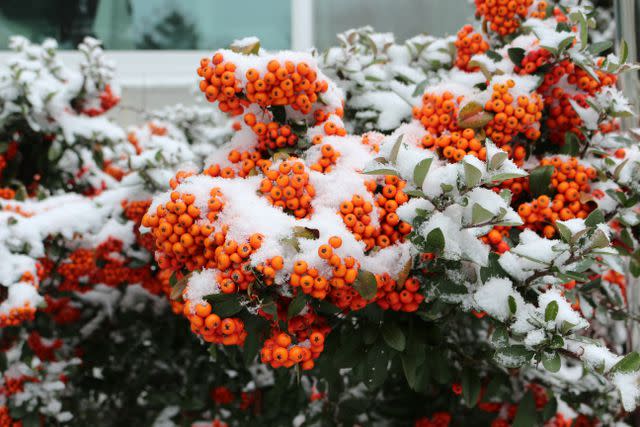How to Create a Garden That Blooms With Color All Year Long
Bring color into your garden throughout spring, summer, fall, and winter.

Jacky Parker Photography / Getty Images
Creating a garden that bursts with color year-round is a goal many gardeners have. But while it may be easy to create interest during spring and summer when many flowers are blooming, maintaining color in fall and winter may seem like a mystery. Luckily, there are many ways to design an eye-catching garden year-round, from growing ornamental grasses and perennial flowers to planting berry bushes and evergreen trees. All it takes is some forward planning, and you can create a garden that blooms with color during spring, summer, fall, and winter.
Meet the Expert
Peggy Anne Montgomery, horticulturist with FlowerBulbs.com
Roger Davis, outdoor landscape manager at Longwood Gardens
Related: 11 Colorful Perennial Flowers That Will Thrive All Summer
Know Your Growing Zone
The first step to creating a garden that blooms with color year-round is to know your growing zone. "Understanding your growing zone is the key to selecting plants that will not just survive but thrive in your specific climate conditions," says Roger Davis, outdoor landscape manager at Longwood Gardens. "Local garden centers are a great resource for helping to find plants adapted to your zone." Knowing your growing zone will also help you identify plants native to your area, which are typically lower maintenance than plants that are non-native.
Find Your USDA Growing Zone Here
Check Bloom Times
Make sure you know the bloom times of the flowers you're planting before putting them in the ground. "Flowers are fleeting, so it’s important to take bloom time into consideration when planting your flower garden," says David. "By selecting varieties that bloom at different times, you can create a symphony of colors from spring through fall." Bloom times are often listed as a range. For example, if a label lists spring to summer, it means the plant will bloom at some point within that range and not for that entire time.
Related: The Difference Between Perennials and Annuals, According to Gardening Experts

jfbenning / Getty Images
Plant a Mix of Perennials and Annuals
Perennials are essential if you want a garden with year-round color because they come back and get bigger every year. "Choose spring, summer, and fall bloomers to extend your season of color," says Peggy Anne Montgomery, horticulturist with FlowerBulbs.com. "One easy way to do this is to visit your garden center every month or so to see what’s blooming that would fit your garden style and buy three or five to plant in your garden." For winter interest, look for perennials that have beautiful evergreen foliage or geometric seed heads.
While perennials are the backbone of a colorful year-round garden, annuals add extra charm to your garden's color palette, says Davis. Introduce these plants, which bloom for a single season, strategically to fill in gaps and provide pops of color when needed, ensuring your garden remains vibrant throughout the year.
Grow Plants That Offer 4 Seasons of Color
Opting for plants with four seasons of interest is a smart choice for any gardener. "Seek out shrubs that provide beautiful blooms, lush foliage, captivating autumn color, and beautiful texture during winter," says David. The list of plants that offer four seasons of color isn't long—generally, only trees and shrubs fall into this category, says Montgomery. Some examples include paperbark maple, serviceberry, river birch, redbud, and Sargent's cherry.
Select Long-Blooming Plants
While some plants only bloom for a week or two, others can provide color for much longer. "Long-blooming flowers are the workhorses of a colorful garden," says Davis. "Choose varieties like coreopsis and annual salvias that bloom tirelessly, ensuring a continuous display of color from spring to summer." Long-blooming flowers also provide consistent food for pollinators and can help your garden to be a wildlife sanctuary. To ensure a continuous supply of blooms, make sure you deadhead spent flowers periodically.

Hello_ji / Getty Images
Get Creative When Adding Color to a Winter Garden
Bringing color into your garden during winter can be challenging, but there are ways to make it happen. "Incorporate plants with interesting winter textures such as evergreen shrubs, berry bushes, and ornamental grasses to keep color year-round," says Davis. "Brighten gray vistas with golden-leafed conifers, witch hazels, or leave the bronze-like heads of dried hydrangeas on display. Even bare branches can be unexpected sources of winter color."
Keep Up With Maintenance
To keep your garden healthy and in full bloom throughout the year, regular maintenance is key. Deadheading spent blooms is essential, as it encourages a continuous supply of blooms and ensures plants aren't putting their energy into seed production, says Montgomery. Throughout the year, you should also apply mulch for moisture retention and amend soil with compost to replenish nutrients and encourage a healthy soil environment, says Davis.
Have a Plan for Every Season
Lastly, having a plan is key when it comes to creating a garden with year-round color. To make this more manageable, it's helpful to break your gardening tasks up by season.
Spring: During early spring, you want to ensure that your garden is in its best shape to host the parade of color that's about to come. Start by cleaning up your garden and removing any dead foliage that accumulated during winter—also, cut back perennials that are getting ready for new growth. Spring is a great time to mulch your beds and start seeds indoors.
Summer: Utilize summer to plant pockets of colorful annuals in places where spring plants have finished, deadhead flowers as they finish, and take notes for next year if things need to move or be edited, says Davis.
Fall: Fall is the best time to plant bulbs for next spring, like tulips, daffodils, and crocus. To add color to your garden, display containers of chrysanthemums and asters—two popular fall-blooming perennials. Add compost to garden beds.
Winter: While most of your garden is dormant, use winter to create a plan for the coming season and buy seeds, says David. Winter is also a good time to do developmental pruning on trees.
Read the original article on Martha Stewart.

